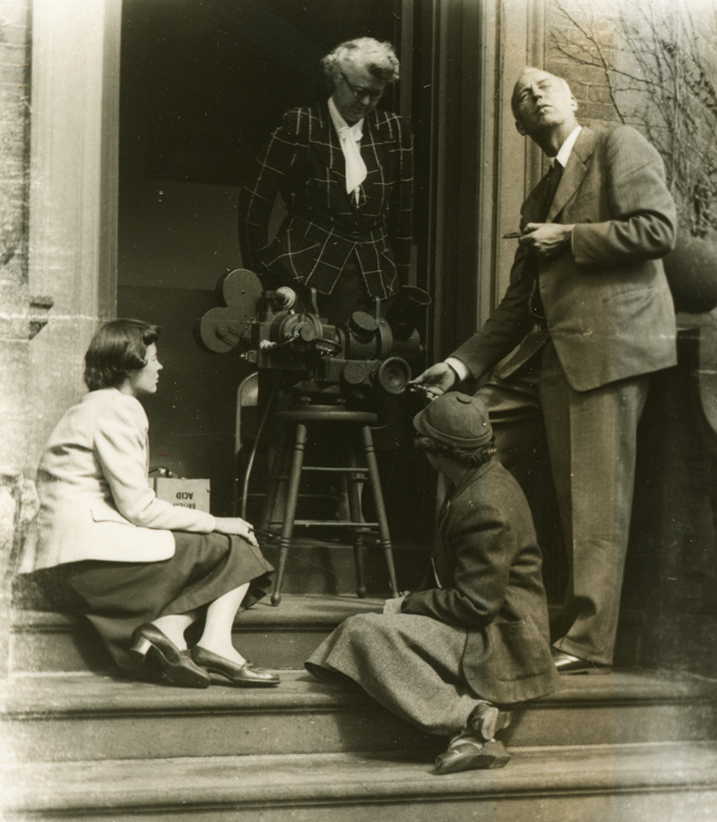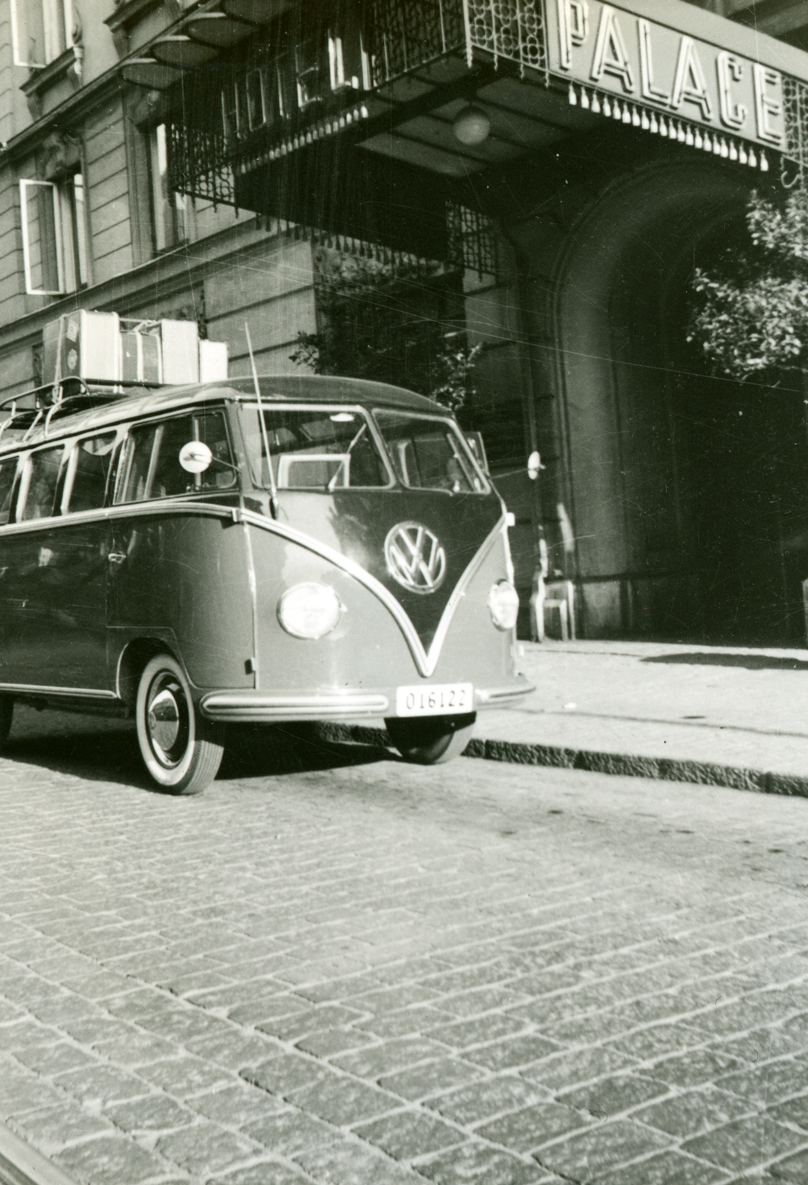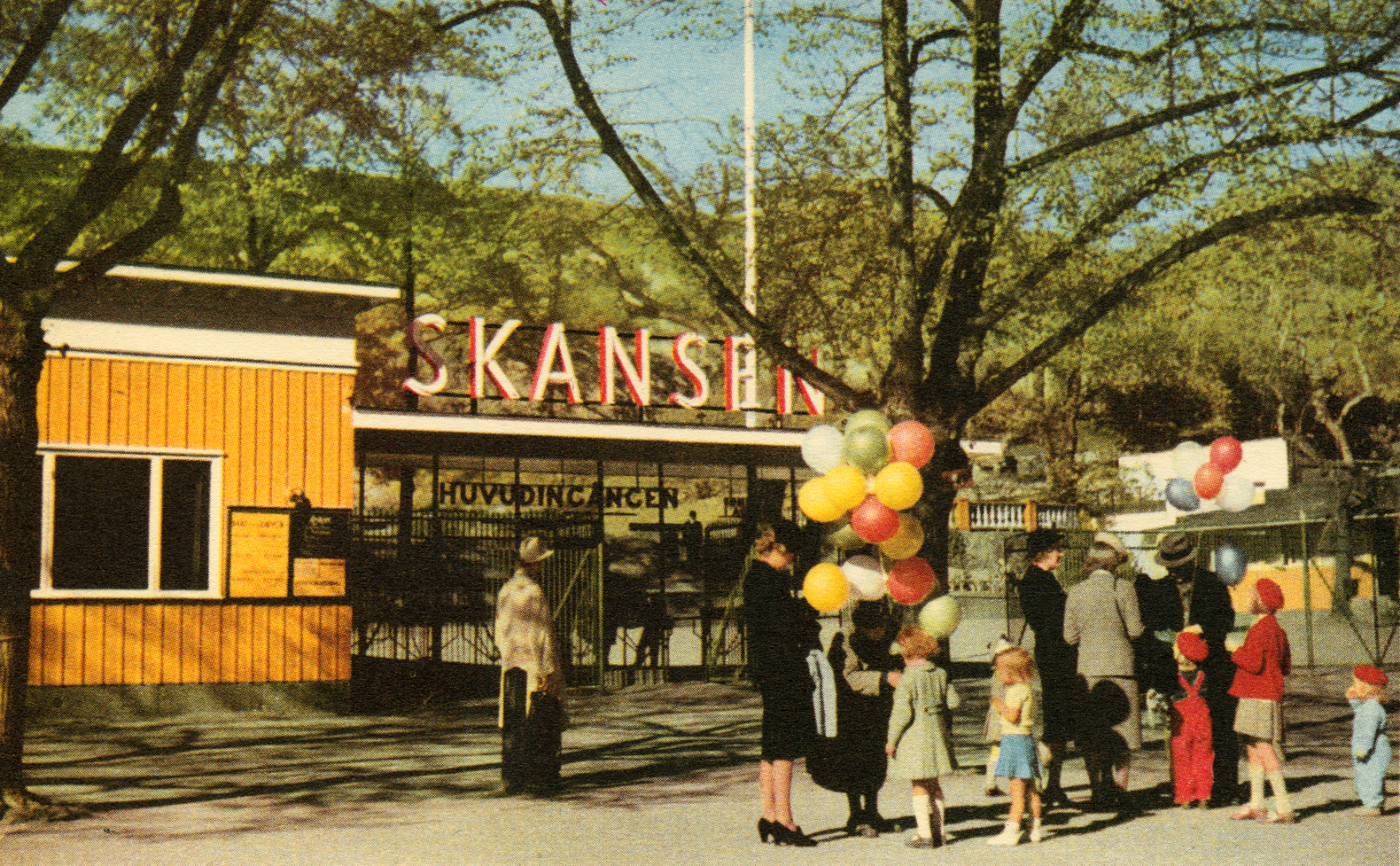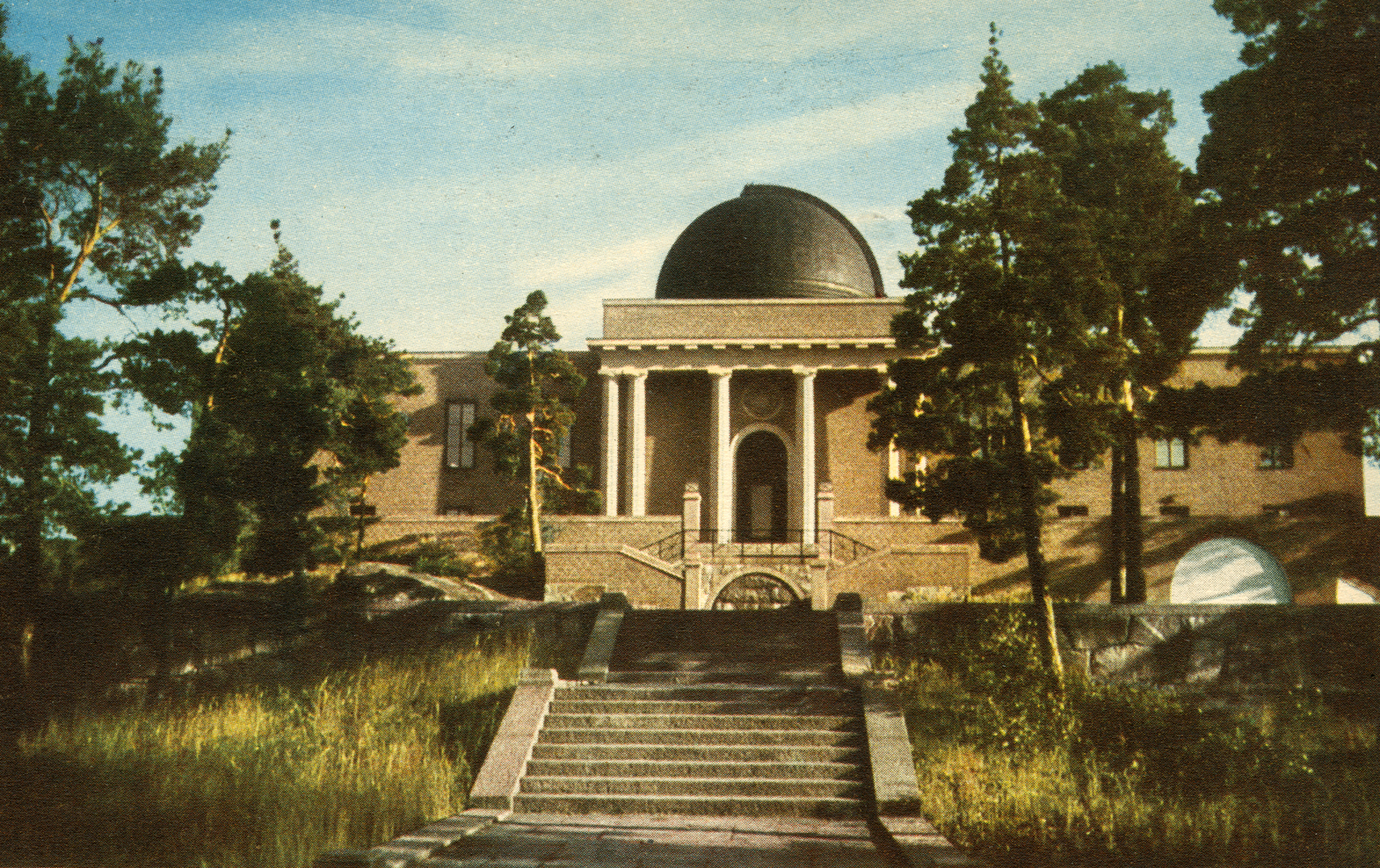Total Eclipse of the Sun
July 17, 2013 by rness | Comments Off on Total Eclipse of the Sun

The solar eclipse expedition team readies equipment on the steps of the Ladd Observatory before departing to Sweden
Charles H. Smiley was a professor of Astronomy and director of Ladd Observatory at Brown University from 1938 -70. During his career, he led fourteen solar eclipse expeditions to far flung locations around the world. Many of these expeditions are documented in scrapbooks and can be viewed in the Brown Digital Repository. The scrapbooks serve as part astronomical log recording scientific data, part photo album, and part travelogue. The Smileys, along with their good friends and colleagues, the Reeds, were fastidious in their collecting of materials for inclusion in the scrapbooks. Everything from cocktail receipts to diplomatic correspondence were carefully pasted into place.
Processing the page images from the scrapbook labeled Sweden was of particular interest to me, having lived for a time in Västergötland myself. The scrapbook documents an astronomical expedition to record the total eclipse of the sun on June 30, 1954. Brown University sent teams to Canada, Pakistan, and Sweden to record the eclipse. An Eastman Kodak executive and two Brown students made up the Canadian team. Charles H. Smiley traveled to Pakistan with Brown Grad student Lt. Somachai Chansuvan, while Smiley’s wife Margaret, along with Mary Quirk ’22, Constance Herlihy Reed ’34, and Donald S. Reed traveled to Sweden, the key point for observations. The scrapbook tells the chronological tale of the trip through ephemera, photographs, postcards, Swedish and American newspaper clippings, letters, and reports on the expedition, all providing a portrait of mid-century travel to Sweden.
 The expedition team arrived in Gothenburg on May 21st, where they spent some time sightseeing. In early June, the party departed from their lodgings at The Place Hotel, after loading all matter of astronomical equipment onto the roof of a red VW bus, and traveled inland to Småland. The group stayed at Sunds Herrgard, a lake country estate, and searched for the best site to observe the eclipse. Once the site, in a nearby rye field, was decided upon, local farmers helped to construct a cement pier and platform on which to mount the photo-theodolite
The expedition team arrived in Gothenburg on May 21st, where they spent some time sightseeing. In early June, the party departed from their lodgings at The Place Hotel, after loading all matter of astronomical equipment onto the roof of a red VW bus, and traveled inland to Småland. The group stayed at Sunds Herrgard, a lake country estate, and searched for the best site to observe the eclipse. Once the site, in a nearby rye field, was decided upon, local farmers helped to construct a cement pier and platform on which to mount the photo-theodolite
(an optical tracking instrument consisting of a camera and theodolite a singletripod). An emergency trip to Jönköping was made for parts when it was discovered that the theodolite had sustained damage during the transatlantic crossing. Sadly, on June 30th bands of clouds crossed the blue skies and the team were unable to capture any images of the eclipse. Mrs. Smiley’s cablegram to the public relations director at Brown summed up the expedition’s observations in one word…”clouds”. The islands of Öland and Gotland turned out to be the best Swedish observation points. For the Canadian team, and back in Providence, the whole event was hidden under cloud cover. All was not lost, however; Charles Smiley’s cablegram from Pakistan cheerfully read “Complete success. Cloudless skies. Photos to be developed soon. Prime Minister Present.”
Once the eclipse was over, the Swedish group once again became tourists and headed to Stockholm and environs, visiting Gamla Stan, glass blowing facilities, medieval castles, the open air museum Skansen, and the Saltsjöbaden Observatory, naturligtvis.








